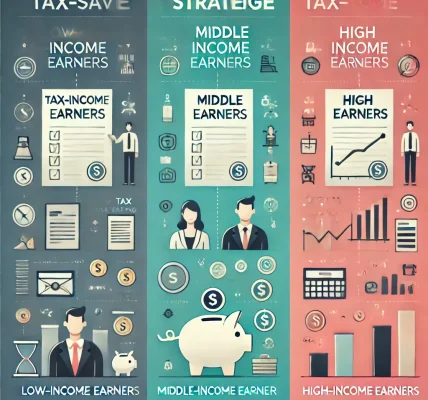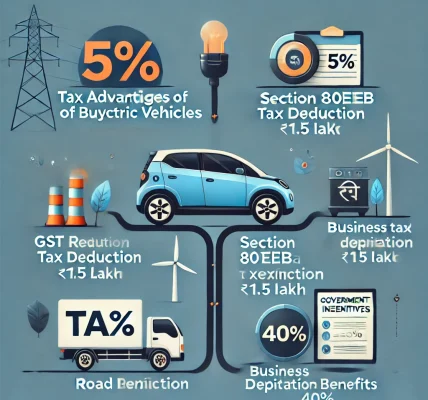Freelancing and side hustles have become increasingly popular as more people seek to supplement their income or pursue their passions. However, with this flexibility comes the responsibility of managing your taxes effectively. Navigating the complexities of tax laws related to freelance income and side gigs can be challenging, but with the right knowledge and strategies, you can stay compliant and optimize your tax situation.
1. Understanding Your Tax Obligations as a Freelancer
As a freelancer or someone with a side hustle, you are considered self-employed, which means you are responsible for reporting and paying taxes on your income. Unlike traditional employees, there are no automatic tax withholdings from your pay, which means it’s up to you to set aside money for taxes.
2. Classifying Your Income: Freelance vs. Side Hustle
The IRS treats all income from freelance work and side hustles as taxable income, regardless of the amount you earn. This means whether you’re a freelance graphic designer, a rideshare driver, or selling handmade goods online, you must report this income on your tax return. Freelance income typically falls under the category of “self-employment income,” which may require you to pay self-employment taxes in addition to regular income taxes.
For side hustles, you may be earning additional money from a variety of sources, such as selling products, teaching online classes, or renting out property. Regardless of how much you earn, it is important to report all of this income accurately.
3. Self-Employment Taxes: What You Need to Know
As a self-employed individual, you are required to pay self-employment taxes, which cover Social Security and Medicare contributions. These taxes are typically 15.3% of your net earnings (12.4% for Social Security and 2.9% for Medicare). The good news is that half of your self-employment tax (7.65%) is deductible from your income when calculating your total tax liability.
How to calculate self-employment taxes:
- Net Income: Subtract your business expenses from your gross income to determine your net income.
- Self-Employment Tax: Multiply your net income by 15.3% (unless your income exceeds certain thresholds, in which case additional Medicare taxes may apply).
4. Deductions and Write-Offs: Lower Your Taxable Income
One of the biggest advantages of freelancing and side hustles is the ability to deduct business expenses from your taxable income. By writing off business-related expenses, you reduce your overall taxable income, which can lower your tax bill.
Some common deductions for freelancers and side hustlers include:
- Home office expenses: If you work from home, you can deduct a portion of your rent or mortgage, utilities, and internet costs.
- Business supplies: Office supplies, equipment, software subscriptions, and tools related to your work can be deducted.
- Travel expenses: If you travel for work, including transportation, meals, and lodging, those expenses are deductible.
- Professional services: Fees paid to accountants, consultants, or legal advisors for your business.
- Education: Costs related to courses, certifications, or training that enhance your skills or business.
5. Quarterly Estimated Tax Payments
Since there is no employer to withhold taxes from your paychecks, freelancers and side hustlers are required to make quarterly estimated tax payments to the IRS. These payments are due four times a year and help ensure you don’t face a large tax bill at the end of the year.
To avoid penalties, make sure you:
- Estimate your income and tax liability each quarter.
- Set aside money for your taxes regularly, rather than waiting until the end of the year.
- Pay your taxes on time to avoid interest and penalties.
6. Tracking Your Income and Expenses
Accurate record-keeping is critical for managing taxes effectively. You need to track both your income and expenses throughout the year. Using accounting software or spreadsheets to keep detailed records can help you avoid mistakes and ensure that you are maximizing your deductions.
There are several tools available to help freelancers and side hustlers with this, such as:
- QuickBooks Self-Employed: An easy-to-use accounting tool for freelancers that helps track income, expenses, and deductions.
- FreshBooks: A popular accounting software for self-employed individuals and small business owners that offers invoicing and expense tracking.
- Expensify: A tool for tracking business receipts and expenses.
7. Saving for Retirement While Freelancing
As a freelancer or side hustler, you don’t have access to employer-sponsored retirement plans like a 401(k). However, you still have options to save for retirement and take advantage of tax-deferred growth.
- SEP IRA (Simplified Employee Pension): A tax-deferred retirement account that allows you to contribute a significant percentage of your earnings.
- Solo 401(k): A retirement plan specifically designed for self-employed individuals, offering both employer and employee contribution options.
- Traditional or Roth IRA: Individual retirement accounts that provide tax advantages, depending on whether you choose a traditional or Roth IRA.
Contributing to a retirement account not only helps secure your future but can also lower your taxable income, which reduces your overall tax burden.
8. Tax Filing Tips for Freelancers and Side Hustlers
When tax season rolls around, it’s important to file your tax return accurately and on time. Here are some tips to help you navigate the process:
- File a Schedule C: If you are a freelancer or have a side hustle, you’ll need to file a Schedule C (Profit or Loss from Business) along with your Form 1040 to report your income and expenses.
- Take Advantage of Tax Credits: Look for tax credits that can lower your tax bill, such as the Earned Income Tax Credit (EITC), which is available to low- and moderate-income workers, including freelancers.
- Consider Working with a Tax Professional: If you’re unsure about handling your taxes, consider consulting a tax professional who specializes in self-employment or freelance income. They can help you navigate deductions, credits, and any unique tax situations that may apply to you.
Final Thoughts
Handling taxes on freelance income and side hustles may seem daunting, but with proper planning, organization, and knowledge, you can manage your taxes efficiently and avoid unnecessary stress. By staying on top of your income, deductions, and quarterly payments, you can minimize your tax burden and maximize your savings.




